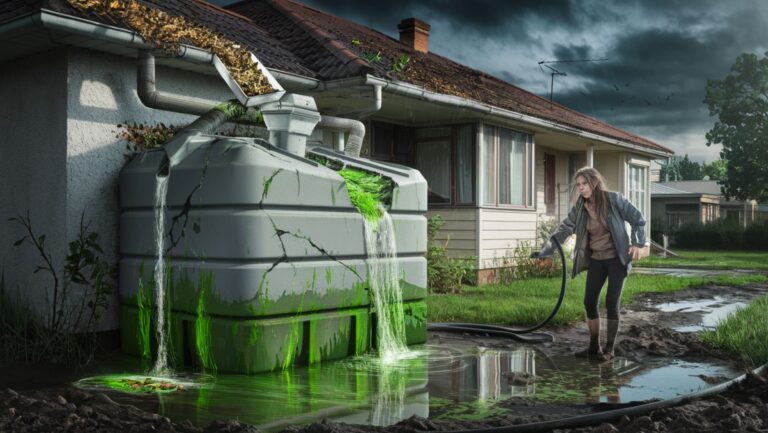Calculate Your Roof’s Rainwater Harvesting Potential
Have you ever gazed out of your window during a downpour and wondered how much of that rainwater could be saved and reused? It’s one of those thoughts that blinks in and out of focus, becoming clearer when you start considering the untapped potential sitting right above your head—your roof. Calculating rainwater harvesting potential isn’t just about crunching numbers; it’s about envisioning a sustainable future where you maximize the natural resources at your disposal.
What is Rainwater Harvesting?
Let’s start with the basics. Rainwater harvesting is simply the collection and storage of rainwater, which would otherwise flow off your roof and disappear into drains, never to be seen again. This water is collected for various purposes like irrigation, landscaping, and even some indoor uses after appropriate treatment. It’s like catching a free gift from the sky, one that reduces your dependence on municipal water supplies and lowers your water bill.
Benefits of Rainwater Harvesting
You’re probably wondering why bother at all. The appeal of rainwater harvesting is its dual benefit to both your wallet and the environment. For starters, it provides an alternative water source during periods of drought or restrictions. But there’s more. Collecting rainwater reduces stormwater runoff, decreasing the risk of flooding and the pollution carried to water bodies. Additionally, plants often prefer rainwater to treated tap water because it’s gentler on them, lacking the chemicals sometimes found in municipal supplies. All of these make rainwater harvesting a nifty way to tread lightly on the planet.
Assessing Your Roof’s Potential
Calculating how much rainwater you can actually collect involves a bit of mathematics but don’t worry, it’s not rocket science. To begin with, you need to understand your roof’s characteristics since they play a significant role in the volume of water you can harvest.
Size of the Roof
The size of your roof is a key determinant. Essentially, the larger the surface area, the more water you can catch. You’re going to need the footprint area of your roof which is calculated by length multiplied by width. If you have an oddly shaped roof, consider breaking it down into simpler geometric shapes and adding those areas together.
Roof Material and Slope
Not all roofs are created equal. The material and slope can influence the efficiency of water collection. Smooth surfaces like metal or glazed tiles allow water to run off easily, resulting in lesser absorption and more collection. On the other hand, rougher materials like slate or green roofs may soak up a bit more water, reducing collection volume.
Environmental Factors
You can’t overlook Mother Nature. The amount of rain your area receives is obviously vital. Check your local meteorological data for annual rainfall averages. Also, consider the seasonality of rainfall—steady amounts throughout the year are more beneficial than sporadic downpours. Be aware of other environmental factors too, like trees around your house that can drop debris and leaves onto your roof, affecting water purity and collection efficiency.

Calculating Harvested Rainwater
To calculate rainwater harvesting potential in gallons, multiply your roof’s square footage by the annual rainfall in inches and a conversion factor of 0.623 (representing gallons per square foot per inch of rain), then multiply by an efficiency factor of 0.85 to account for system losses. For example, a 2,000-square-foot roof in an area with 30 inches of annual rainfall could potentially harvest about 31,773 gallons of water per year.
Storage Solutions
Of course, collecting rainwater is just one piece of the puzzle. You’ll need to store it efficiently. This section will help you figure out what suits your home best.
Types of Tanks
Tanks come in various shapes and sizes—some fit snugly under the eaves, others are tall and cylindrical. Your choice depends on space availability and personal preference. Above-ground tanks are easier to install and maintain, while underground tanks save space and are often used for larger scale setups.
Tank Capacity
Your annual harvest potential can guide you on capacity. However, remember that your tank needn’t store the entire annual collection, as rain is typically replenished multiple times a year. For a 19,000-gallon annual potential, perhaps start with a 1,500-gallon tank unless you have specific use cases that demand more storage.
Maintenance Requirements
While tanks are relatively low-maintenance, periodic checks are crucial. Look out for cracks, leaks, or signs of contamination to ensure your collected water remains clean and usable.
Making the Most of Your Rainwater
So you’ve done the math and sorted your storage. How should you put this saved water to use effectively?
Outdoor Uses
The simplest application is outdoor use. Water your plants, wash your car, or even top up a swimming pool. Because the water hasn’t been treated, it’s kinder to your garden and landscape, encouraging healthy plant growth.
Indoor Uses
With a bit more effort, harvested rainwater can also be used indoors, primarily for non-potable purposes like flushing toilets, washing clothes, or filling heated floors. This might require additional plumbing or filtering systems, but it’s often still cheaper and more sustainable in the long run.
Roadblocks and Solutions
Sure, not every rainwater harvesting tale is trouble-free. Some hurdles include fluctuating rain patterns, the initial setup cost, or even local regulations. It’s a good idea to check if you need permits and to consider potential solutions like filtration systems or partnerships with neighbors for mutual benefits.
Conclusion: A Step Towards Sustainability
And there you have it—a thorough but entirely manageable approach to rainwater harvesting from your roof. By taking this step, you’re not just investing in lower water bills; you’re making a valuable contribution to water conservation and environmental well-being. It’s about taking control of a resource you scarcely realized you had. So, next time the rain drums on your roof, you might find yourself smiling, knowing you’re catching your own slice of nature’s bounty.
Hope you feel empowered to give rainwater harvesting a go—you might be surprised at how much you can collect (and save). Not every drop can be captured, but every drop counts.







